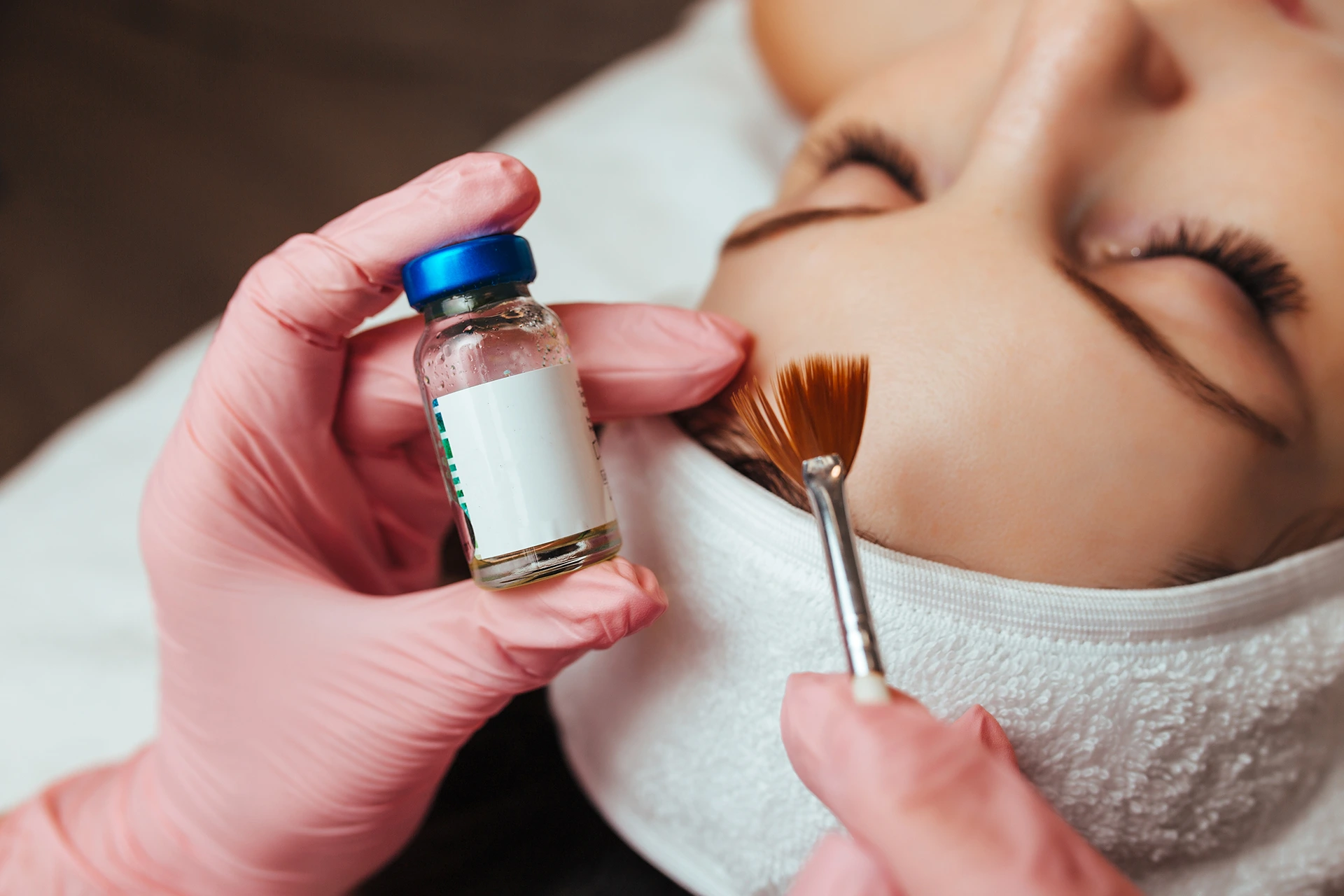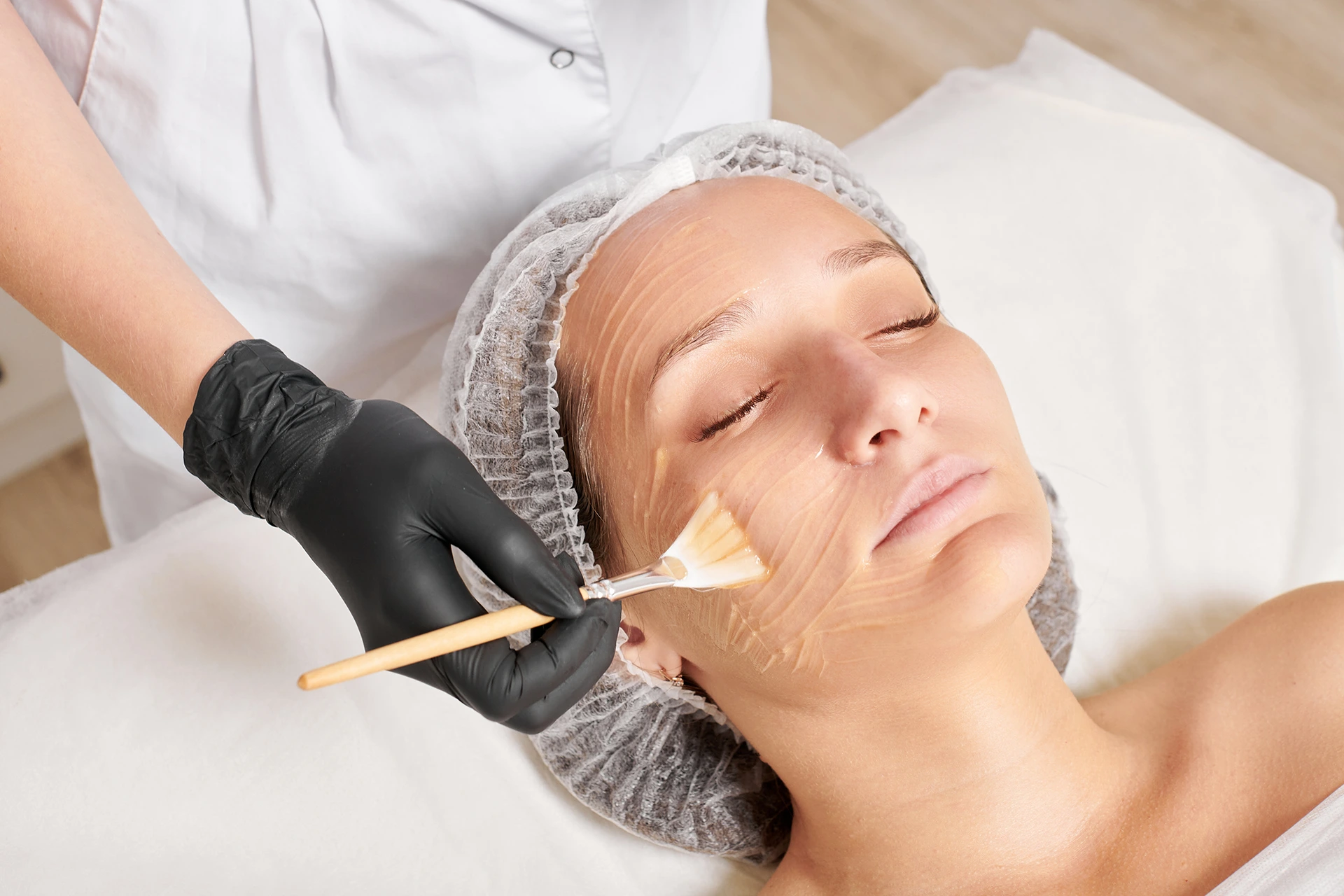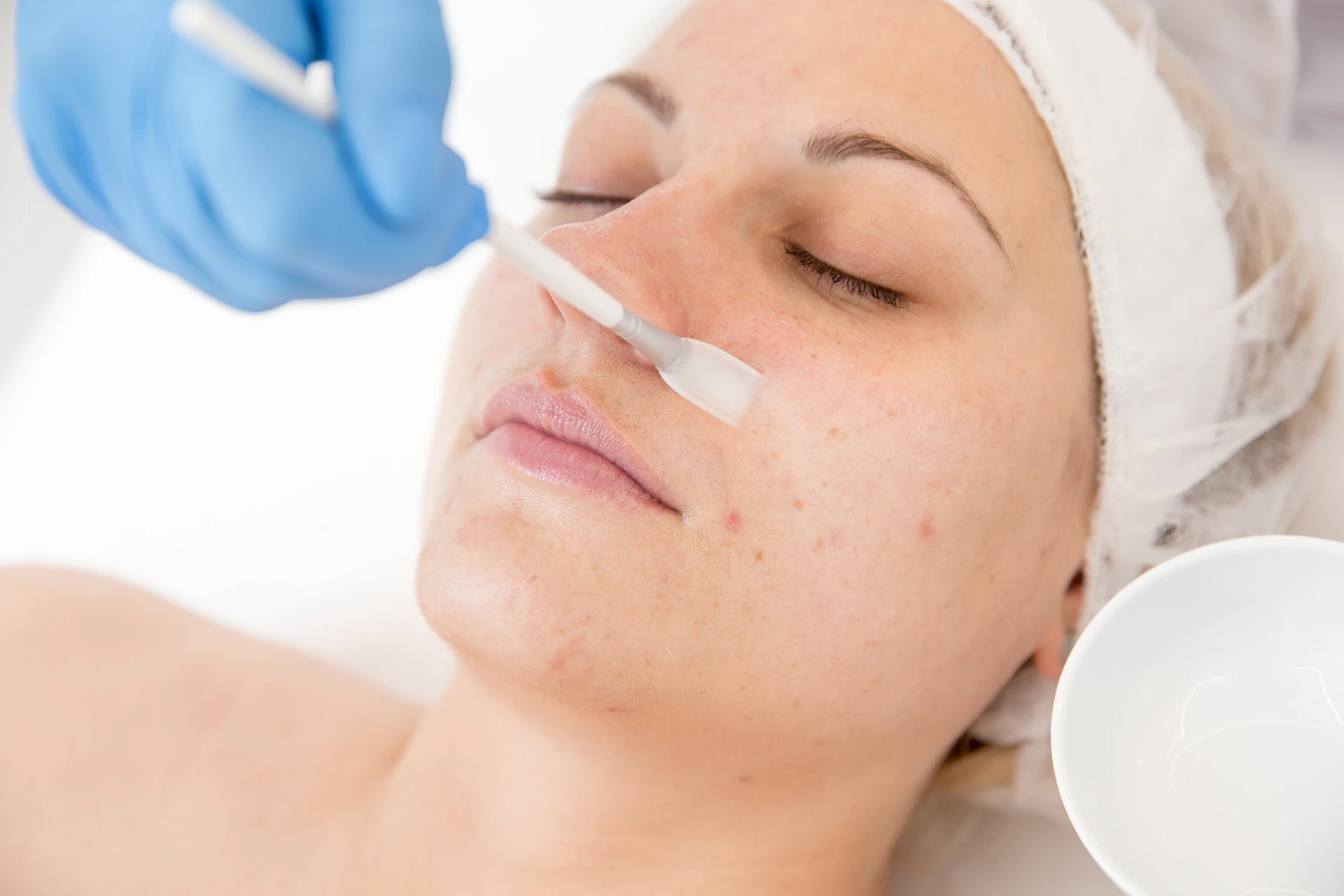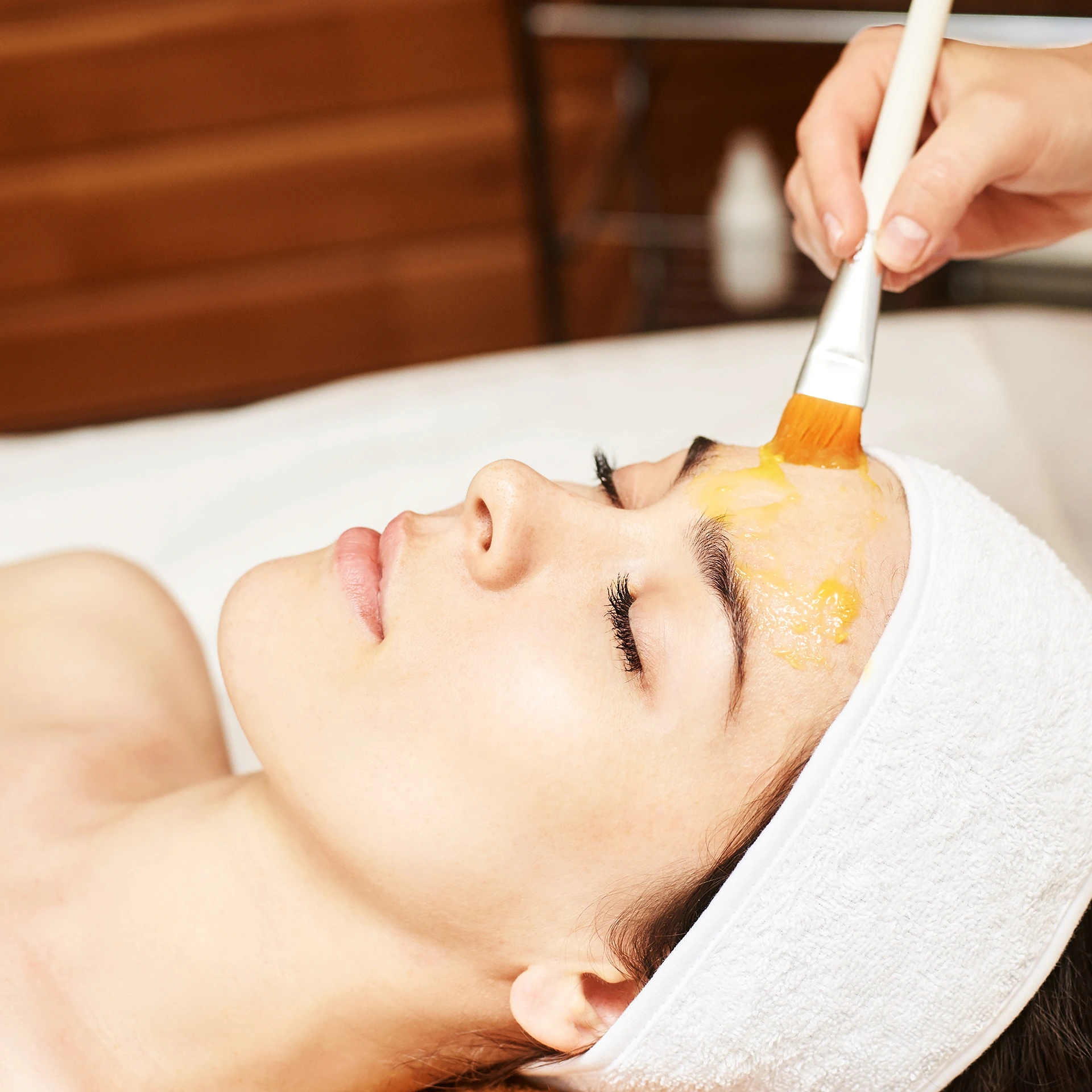From Dull to Radiant: The Benefits of Chemical Peels for Hyperpigmentation Treatment
What is Hyperpigmentation?
Hyperpigmentation is a common skin concern that causes areas of the skin to become darker than the surrounding skin. It can be caused by a variety of factors, including sun damage, acne scars, hormonal changes, and genetics.
People with darker skin tones are more prone to hyperpigmentation than those with lighter skin, but it can affect anyone. In this article, we’ll explore how chemical peels can help address hyperpigmentation and improve the overall appearance of your skin.
How Does Chemical Peel Treat Hyperpigmentation?
If you’re struggling with hyperpigmentation, a chemical peel could be an effective solution. This type of treatment is a form of chemical exfoliation that can penetrate deeper into the skin than most scrubs and gentle exfoliators. In the following paragraphs, we’ll explore how chemical peels tackle hyperpigmentation and what the process involves.
At its core, a chemical peel entails the application of a chemical solution to the surface of the skin. The solution is intended to exfoliate the outermost layer of dead skin cells, revealing fresh, healthy skin.
The type of chemical solution used will depend on a variety of factors, including the type of hyperpigmentation and the patient’s skin type and medical history. Some of the most common types of chemical peels for hyperpigmentation include alpha-hydroxy acids (AHAs), beta-hydroxy acids (BHAs), trichloroacetic acid (TCA), and carbolic acid.
Once the solution is applied, it penetrates the skin’s surface and begins to break down the bonds that hold dead skin cells together. The chemical solution causes the skin to shed these dead cells more quickly than it would through natural processes. This deep exfoliation helps to reduce the appearance of hyperpigmentation by removing the top layer of discolored skin.
But chemical peels don’t just remove dead skin cells. They can also stimulate collagen production, which helps reduce the appearance of hyperpigmentation even further. Collagen is a protein that helps keep our skin looking plump and youthful.
As we age, our collagen production slows down, which can lead to wrinkles and other signs of aging. By stimulating collagen production, a chemical peel can help reduce wrinkles and fine lines, while also improving overall skin texture and brightness.
Types of Chemical Peels for Hyperpigmentation
Hyperpigmentation is a common skin concern that affects people of different ages, skin types, and ethnicities. Fortunately, chemical peels for hyperpigmentation offer an effective solution to those who are suffering from it. If you’re curious about chemical peels and considering one for yourself, you may want to learn more about the different types available. In this article, we’ll explore the most common types of chemical peels for hyperpigmentation and how they can help improve your skin’s natural glow.
Superficial Peels (Light)
Hyperpigmentation is a common skin issue that can be caused by a variety of factors including sun exposure, hormonal changes, and inflammation.
People with darker skin tones are more likely to experience hyperpigmentation, which can present as dark spots or patches on the skin. While there are many treatments available to address hyperpigmentation, one highly effective option is the use of superficial peels.
Superficial peels are the mildest type of chemical peel, and they are typically made with alpha-hydroxy acid (AHA) or beta-hydroxy acid (BHA) such as glycolic acid, lactic acid, and salicylic acid.
These gentle exfoliants work by removing dead skin cells on the stratum corneum, the outermost layer of the skin. By doing so, they reveal smoother skin and a natural glow. Additionally, these chemical peels stimulate the production of collagen, which can improve skin texture and reduce fine lines.
When it comes to treating hyperpigmentation, superficial peels are particularly effective for mild cases. They can help lighten dark spots on the skin and even out skin tone. Plus, they have minimal side effects and require little downtime, making them a convenient option for people with busy schedules.
Salicylic acid and glycolic acid peels are two common types of superficial peels for hyperpigmentation treatment. Salicylic acid has anti-inflammatory properties that can help reduce redness and inflammation, while glycolic acid peels are great for improving skin texture and minimizing the appearance of pores. Lactic acid is also a great option for those with sensitive skin, as it is a gentle exfoliant and can even out skin tone without causing irritation.
Medium Peels
Medium peels are a step up from superficial peels when it comes to treating hyperpigmentation, as they can address moderate cases of hyperpigmentation, fine lines, wrinkles, and acne scars.
These peels generally use trichloroacetic acid (TCA) as their active ingredient. TCA penetrates deeper into the skin than superficial peels, giving it the ability to improve the texture and appearance of the skin on a deeper level.
During a medium peel, a TCA solution is applied to the skin in a controlled manner. This solution removes the top layer of dead skin cells, which can harbor hyperpigmentation, and triggers collagen production within the skin. The result is skin that looks smoother, fresher, and more youthful.
This type of peel is more aggressive than a superficial peel and may cause moderate discomfort or pain during the treatment. Additionally, recovery time from a medium peel may be longer than that of a superficial peel.
But as with all chemical peels, there are some potential risks involved with medium peels. This type of chemical exfoliation may impact those with darker skin more than those with lighter skin tones, and it may trigger excess production of melanin in the skin, which can cause post-inflammatory hyperpigmentation.
It is important to discuss any concerns or questions about medium peels and their potential risks with a healthcare professional before deciding whether to undergo this treatment.
Deep Peels
If you’re struggling with severe hyperpigmentation and looking for a more effective solution to improve your skin tone, deep chemical peels may be the answer you’ve been searching for.
Unlike superficial or medium peels, deep peels penetrate through to the lower layers of your skin using carbolic acid or trichloroacetic acid. This allows them to target deeper scars and wrinkles, as well as pigmentary disorders that may be more challenging to treat.
However, it’s important to note that deep peels are not without their downsides. They typically require a more extended downtime and have a higher potential for risks and side effects. For that reason, it’s crucial to consult with a medical professional before undergoing this procedure.
Despite the higher potential risk, deep peels offer significant benefits that make them an effective solution for severe cases of hyperpigmentation. By penetrating deep into the skin layers, these peels help to reduce the production of melanin, which causes uneven skin tone and dark spots.
Post-Treatment Care for Chemical Peel for Hyperpigmentation
Here’s what you need to know about taking care of your skin after a chemical peel.
First, it is crucial to keep the treated area clean, dry, and moisturized after your chemical peel. Your skin will be more delicate and sensitive than usual, so it’s essential to use gentle products that won’t cause any irritation or rashes.
To avoid any complications, you should steer clear of harsh scrubbing or invasive treatments for at least the first few days. Instead, opt for a mild cleanser and moisturizer to promote healing and prevent any skin infections.
Sun protection is another vital aspect of post-treatment care. Exposure to sunlight can slow down the healing process and even worsen hyperpigmentation.
That’s why it’s necessary to avoid prolonged exposure to the sun and wear a broad-spectrum sunscreen with at least SPF 30 to avoid any sun damage. Put on a wide-brimmed hat or a scarf if you need to be out in the sun for more than a few minutes.
To ensure a smooth and successful recovery, you should also avoid rigorous physical activities, hot showers, or baths for at least 24-48 hours after your peel. Physical exertion or any activity that makes you sweat excessively can lead to irritation or infection, leading to poor results. Stick to calm, relaxing pursuits until your skin has fully healed.
It’s best to avoid using any products that contain exfoliating agents or active ingredients such as retinol and alpha-hydroxy acids for a few days after the procedure. These ingredients can be harsh on the newly peeled skin, leading to redness and irritation. And, please consult a dermatologist before trying any new product on your skin.
Benefits of a Chemical Peel for Hyperpigmentation
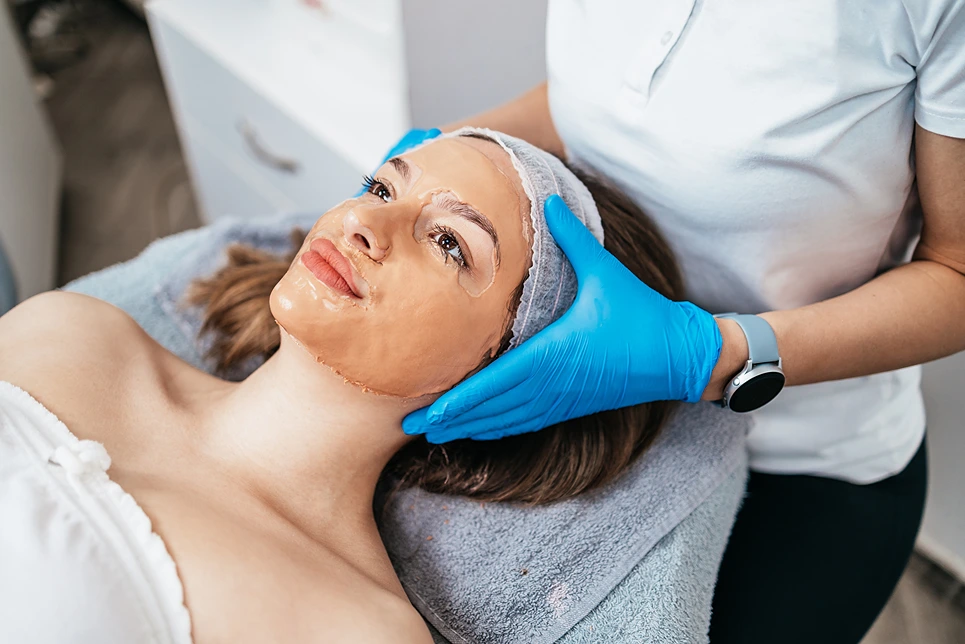
Unlike other treatments that only address the surface of your skin, a chemical peel penetrates deep into the epidermis, targeting dead skin cells to stimulate collagen production and reveal a fresh, radiant, and even complexion.
Whether you’re looking for a gentle exfoliation or a more intensive deep peel, there’s a solution for every skin type and concern. In this article, we’ll explore the benefits of chemical peels for hyperpigmentation and how they help you achieve your desired results.
Improved Skin Tone and Texture
If you’re looking for an effective solution to improve your skin’s texture and tone, chemical peels may be just what you need. This treatment can help reveal smoother and brighter skin by removing dead skin cells which often make the skin appear dull and uneven. But how exactly does a chemical peel work and how can it improve your skin?
Chemical peels work by applying a chemical solution to the skin, which causes exfoliation of the outermost layer of dead skin cells, also referred to as the stratum corneum. As the outermost layer is removed, new skin cells are stimulated and produced in its place. This process results in a smoother, more even skin texture and an overall brighter complexion.
Chemical peels also stimulate collagen production. This protein is essential for maintaining the elasticity and firmness of the skin. As we age, our collagen production decreases naturally which can result in the development of fine lines, wrinkles, and sagging skin. But a chemical peel can help stimulate collagen production and therefore improve the overall appearance and health of the skin.
Some common skin concerns such as dark spots, uneven skin tone, and hyperpigmentation caused by acne scars or excess melanin production, can also be improved with regular chemical peel treatments. Chemical peels work to reduce the appearance of dark spots and uneven skin tone by promoting the growth of new, healthy skin cells and reducing the excess production of melanin. This can leave you with a more balanced and even complexion.
Reduction of Dark Spots and Uneven Skin Tone
If you’re struggling with dark spots, uneven skin tone, or hyperpigmentation caused by excess melanin production, chemical peels may be an effective solution worth considering.
Hyperpigmentation occurs when there is an excess production of melanin, leading to darker spots on the skin. Thankfully, chemical peels can target this excess production and reduce the appearance of dark spots and uneven skin tone.
There are several types of chemical peels that can target hyperpigmentation. One popular type is glycolic acid peels, which are used to treat mild to moderate cases of hyperpigmentation. Lactic acid peels are another option and are quite gentle, making them suitable for those with sensitive skin. Trichloroacetic acid peels, on the other hand, are used for more severe cases of hyperpigmentation.
The benefits of chemical peel treatments for hyperpigmentation are numerous. Firstly, they can stimulate collagen production, which is an essential protein for maintaining the elasticity and firmness of the skin. By stimulating the production of new collagen, chemical peels can help minimize the appearance of deeper scars and wrinkles.
Another benefit is that chemical peels provide a gentle exfoliation of dead skin cells, resulting in a smoother and brighter complexion. This process also helps to accelerate cell turnover rate, which can reduce the appearance of dark spots and uneven skin tone caused by hyperpigmentation. With minimal side effects and potential risks, chemical peels are a reliable and effective solution for many types of hyperpigmentation.
Acceleration in Collagen Production
Collagen production is a crucial component in many skincare treatments, including chemical peels for hyperpigmentation. This protein plays a vital role in the skin’s firmness, elasticity, and overall structure. Without it, the skin can sag, wrinkle, and lose its youthful appearance.
Fortunately, chemical peels can stimulate the production of collagen in addition to targeting hyperpigmentation. By removing dead skin cells and promoting cell turnover, chemical peels help to improve skin texture and tone while encouraging the acceleration of collagen production.
The increase in collagen production that results from chemical peel treatments can help to reduce hyperpigmentation, wrinkles, and fine lines. Moreover, it helps to reveal smoother, hydrated, and more youthful-looking skin. Collagen also strengthens the skin barrier, retaining moisture and keeping the skin looking healthy and vibrant.
Effective Solution Against Acne Scars and Post-Inflammatory Hyperpigmentation (PIH)
Acne scars form when the skin’s tissue is damaged, leading to uneven texture and scarring. PIH, on the other hand, is caused by an excess production of melanin that results in dark spots after inflammation or injury to the skin.
Chemical peels can address both concerns by removing dead skin cells and stimulating collagen production. Different types of chemical peels can work for different skin types and concerns. For example, glycolic acid peels are great for mild acne scars and uneven skin tone, while trichloroacetic acid peels are better for deeper scars and darker skin tones.
It’s important to choose the appropriate type of peel and to consult with a skincare professional to determine the best approach for your skin. While chemical peels are generally safe, there are potential risks and side effects to consider. These can include temporary redness, burning, and flaking, as well as more severe side effects like scarring or infection.
To minimize risks and optimize results, follow your skincare professional’s advice and avoid over-the-counter peels. Don’t pick or peel the skin after treatment, use sunscreen, and avoid strenuous exercise or activities that can cause sweating for a few days after treatment.
Suitable for All Skin Types, including Dark Skin
There are different types of chemical peels, each varying in depth and the type of ingredients used. To determine the best type of peel for your skin, it is crucial to consult with a skincare professional who can assess your medical history and skin concerns to develop a customized treatment plan.
The severity of your hyperpigmentation and your skin type also play significant roles in determining the best chemical peel type for you. For mild hyperpigmentation, a superficial or light peel may be sufficient, while deeper scars may require a medium or deep peel.
Glycolic acid and lactic acid peels are generally well-tolerated and effective for lightening hyperpigmentation, while salicylic acid and trichloroacetic acid peels are better suited for those with more severe hyperpigmentation.
When choosing a chemical peel for dark skin, it is important to exercise caution to avoid potential risks like post-inflammatory hyperpigmentation. Darker skin types have a higher risk of developing hyperpigmentation after a peel, so it’s essential to choose a peel type and concentration that will not irritate the skin. It’s also important to follow a post-treatment skincare routine and to avoid exposure to the sun to reduce the risk of further hyperpigmentation.
Common Ingredients Used in Chemical Peels for Hyperpigmentation Treatment
Are you struggling with uneven skin tone, dark spots, or acne scars? Chemical peels can be an effective solution for hyperpigmentation caused by excess production of melanin and other pigmentary disorders. But what ingredients are used to create these peels? In this article, we’ll explore the common ingredients used in chemical peels for hyperpigmentation treatment, their effectiveness, and how they work to reveal smoother, brighter, and more radiant skin.
Salicylic Acid (Beta Hydroxy Acid or BHA)
Salicylic acid, also known as Beta Hydroxy Acid (BHA), is a popular ingredient in chemical peels for hyperpigmentation treatment. It has numerous benefits that make it a great choice for addressing various skin concerns, including dark spots, uneven skin tone, and acne scars.
One of the primary benefits of salicylic acid is its ability to penetrate the outermost layer of the skin, the stratum corneum, and dissolve dead skin cells. This process is called chemical exfoliation and helps to unclog pores and reduce inflammation. Salicylic acid also stimulates the production of collagen, which is crucial for maintaining strong, healthy skin.
When used as an ingredient in chemical peels for hyperpigmentation treatment, salicylic acid can help improve the overall look and feel of the skin. It is generally considered safe for most skin types, but individuals with sensitive skin should exercise caution when using salicylic acid. In rare cases, it can cause mild irritation or redness.
The recommended concentration level for salicylic acid in chemical peels for hyperpigmentation treatment is typically between 5-30%. A concentration of 5-10% is considered gentle and suitable for individuals with sensitive skin, while a concentration of 20-30% is more effective for deeper scars, wrinkles, and pigmentation issues.
What Are the Different Types of Hyperpigmentation?
Hyperpigmentation is a common skin concern that affects people of different ages and skin types. It’s a condition where patches of the skin become darker than the surrounding skin due to excess production of melanin.
Different types of hyperpigmentation can be caused by factors such as sun exposure, hormonal changes, acne scars, and other medical conditions. In this article, we’ll explore the different types of hyperpigmentation and discuss the role of chemical peels in their treatment.
Hormonal Hyperpigmentation
Hyperpigmentation is a common skin condition that affects a lot of people, and one form is caused by hormonal fluctuations known as Hormonal Hyperpigmentation. This type of hyperpigmentation occurs when our hormone levels fluctuate, leading to an overproduction of melanin, the pigment that gives color to our skin, hair, and eyes. As a result, dark spots and patches can appear on the skin, especially in areas that are exposed to the sun.
Identifying hormonal hyperpigmentation is crucial for effective treatment. This type of hyperpigmentation is usually symmetrical and appears in areas such as the forehead, upper cheeks, upper lip, and chin. It differs from other forms of hyperpigmentation, such as post-inflammatory hyperpigmentation caused by acne scars or sun damage.
Fortunately, there are several treatment options available for Hormonal Hyperpigmentation, and chemical peels are one of them. Chemical peels can effectively lighten dark spots and patches on the skin. They work by removing the top layer of dead skin cells, which promotes collagen production and cell turnover rate. Chemical peels, especially those with salicylic acid, trichloroacetic acid, and glycolic acid, can be effective in treating Hormonal Hyperpigmentation.
Aside from chemical peels, there are also topical creams and laser treatments that can help treat Hormonal Hyperpigmentation. Topical creams with hydroquinone or kojic acid can help lighten dark spots, while laser treatments can target pigmented skin cells and reduce the appearance of dark spots and patches.
If you’re experiencing Hormonal Hyperpigmentation, it’s best to consult a dermatologist before proceeding with any treatment. They will assess your skin type, medical history, and the severity of your pigmentation to determine the most effective treatment plan for you.
Sun Spots
Sun spots, also known as liver spots, are flat, brown, or black spots that appear on the skin due to excessive sun exposure over the years. They commonly occur on areas of the skin that are frequently exposed to the sun, including the face, shoulders, hands, and arms. These spots can be a source of concern for those who want to improve the appearance of their skin.
Sun spots are a type of hyperpigmentation, but they differ from other types like hormonal hyperpigmentation or post-inflammatory hyperpigmentation caused by acne scars. While hormonal and post-inflammatory hyperpigmentation are due to an excess production of melanin in specific areas, sun spots are caused by the accumulation of melanin in certain areas as a result of sun exposure.
Chemical peels are an effective option for treating sun spots. However, there are potential risks associated with treating sun spots with a chemical peel, particularly if they are done too aggressively or by an untrained professional. It is vital to consult a dermatologist before proceeding with any treatment to determine if a chemical peel is suitable for you and to minimize any potential risks.
Chemical peels that contain trichloroacetic acid (TCA) and glycolic acid can specifically target sun spots. TCA is a medium-to-deep chemical peel that penetrates deeper into the dermis to remove damaged skin cells and promote collagen production. Glycolic acid is a gentle exfoliator that can improve the appearance of sunspots on the surface of the skin.
Breakout-Related Hyperpigmentation
If you’re one of the many dealing with breakout-related hyperpigmentation, you are not alone. Breakout-related hyperpigmentation happens after an acne breakout when a pimple gets inflamed and the skin produces excess melanin which causes the affected area to darken.
Thankfully, there are several treatment options you can try to improve the appearance of these dark spots. Gentle exfoliation is always a good place to start. By removing dead skin cells, you can promote cell turnover and minimize the appearance of hyperpigmentation. Lactic acid, an alpha-hydroxy acid, can also help brighten the skin and improve the appearance of dark spots.
Glycolic acid peels are another option to consider for more significant scarring. These peels work by removing the upper layers of the skin to reveal smoother, brighter skin underneath. However, it is essential to keep in mind that chemical peels can be quite harsh on the skin and should be performed by a trained professional.
Prevention is also key when it comes to treating hyperpigmentation in the first place. Focusing on a consistent skincare routine can help minimize the occurrence of breakouts and hyperpigmentation. If you do experience breakouts, it is essential to avoid picking at any resulting acne scars, as this can worsen hyperpigmentation.

Reveal Smoother, Brightened Skin This Season With a Customized CosMedic Chemical Peel
Schedule your complimentary consultation today to discuss your concerns and learn how a chemical peel treatment plan tailored specifically for you can help you reveal rejuvenated, glowing skin just in time for fall. Call (734) 249.8722 or visit this page to book your appointment with one of our experienced skincare experts today.
Let’s get started on your journey to a smoother, brighter and rejuvenated complexion!




